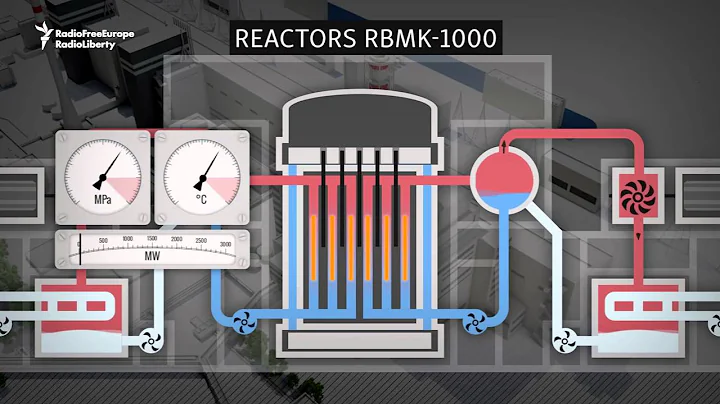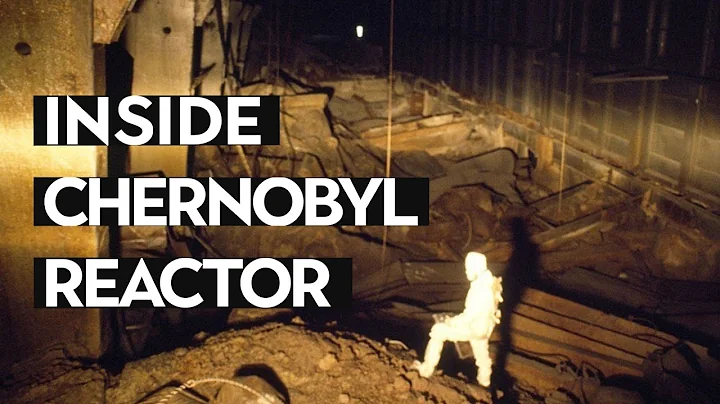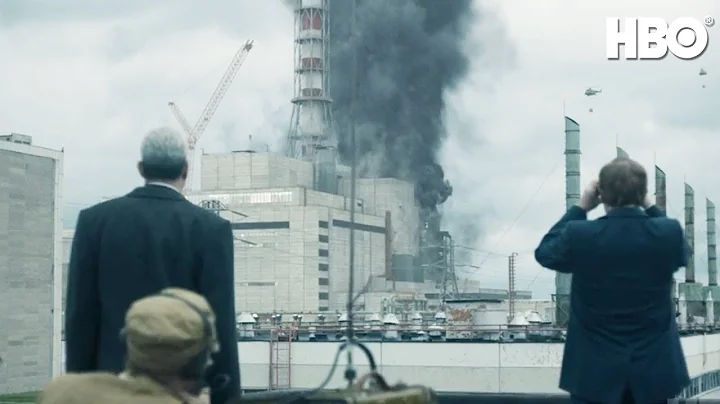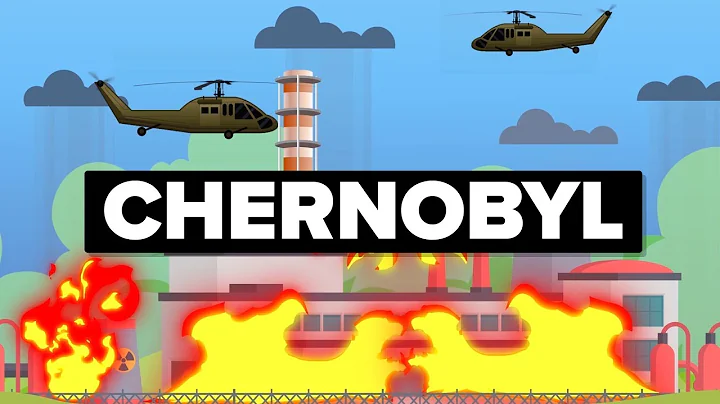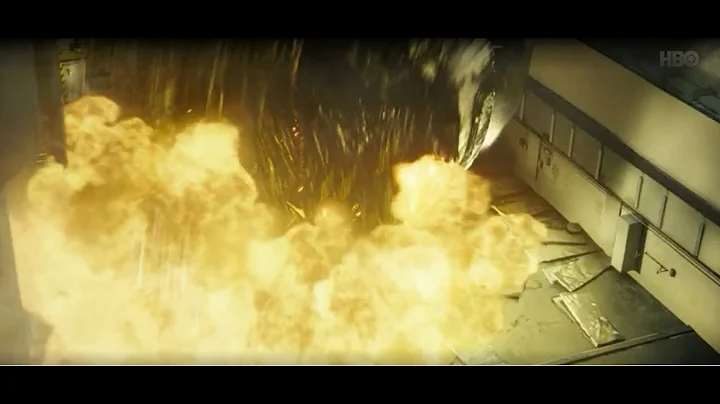
Reactor No. 4 of the Chernobyl Nuclear Power Plant exploded
The Chernobyl disaster occurred on April 26, 1986 in Reactor No. 4 of the Chernobyl Nuclear Power Plant near the city of Pripyat in northern Ukraine . Located in the Soviet Union. When the RBMK 1000 reactor overheated and exploded during safety tests, at least 5% of the radioactive reactor core was released into the environment, directly resulting in the presence of deposited radioactive material across large areas of Europe.
It is worth mentioning that the explosion also killed two engineers. Another 28 to 30 operators and firefighters who helped put out the fire died of acute radiation syndrome in the weeks after the accident. Some workers later died. for reasons related to suspected radiation exposure.
Factory workers, firefighters and residents of the nearby city Pripyat were exposed to dangerous doses of ionizing radiation.
This event may also have a significant impact on the environment . Radiation contaminated drinking water and fish over long distances, destroyed 1.5 square miles (4 square kilometers) of pine forest, and killed or induced mutations in other plants or animals. Large areas of Belarus, Ukraine, Russia and parts of Europe are contaminated to varying degrees.

Trees died from radioactive contamination
The Chernobyl nuclear accident was one of the worst accidents to ever occur, rated level seven on the International Nuclear Event Scale (INES), along with the Fukushima nuclear disaster. However, it did lead to significant changes in safety and industry cooperation. Former Soviet President Gorbachev once said that the Chernobyl accident was one of the most important factors in the disintegration of the Soviet Union.
Here are some interesting facts about the Chernobyl nuclear disaster.
1) The reactor had a design flaw
The Chernobyl disaster is often attributed to human error. In 1987, construction manager and nuclear power plant director Viktor Bryukhanov was held accountable for safety violations and imprisoned. He was released in 1991.
But now we know that the cause of the accident was likely a combination of human error and design flaws in the Soviet-era RBMK 1000 reactor, many of which were faults known to Soviet experts but kept secret from Blyukhanov.
Some of these drawbacks are:
- Reactors can have a positive void coefficient, where an increase in steam bubbles ("voids") is accompanied by an increase in core reactivity. This can be produced by using graphite instead of water as the moderator . The
void coefficient is a number used to calculate the reactivity of a nuclear reactor as the void content (steam bubbles) increases or decreases in the reactor's moderator.
As vapor increases in the fuel channels, neutrons that would have been absorbed by the denser water create more fission in the fuel. In Chernobyl 4, conditions resulted in a positive void coefficient large enough to overwhelm all other effects on the power coefficient. The reactivity of the
reactor increases with the increase in steam within the core. The core then becomes more reactive and produces more steam and more power, until the extreme temperatures and pressures in the core cause the reactor to malfunction—causing severe damage to many of the fuel components and ultimately causing an explosion that destroys the reactor. - lacks a sound containment structure or other enclosure around the reactor. Pressure in the core created an explosion that exposed it and leaked radioactive vapor into the atmosphere. This can be prevented by strengthening the airtight enclosure.
Additionally, power plant operators have not received adequate training to use this type of reactor. Unaware of its weakness, reactor staff disabled the automatic shutdown mechanism in preparation for testing the reactor after the main power supply was interrupted.
As the reactor began to overheat, the special design of the control rods caused a dramatic power surge when inserted into the reactor, causing a rapid increase in core reactivity.
2) The true death toll of the disaster is unknown
It took firefighters nearly two weeks to put out the graphite-fueled blaze after the explosion.
But fires are not the only threat, as toxic smoke - consisting mainly of the fission products iodine-131, cesium-134, plutonium-239 and cesium-137 - is still in the air.
In addition to the two engineers killed in the explosion, 28-31 first responders and plant operators died of acute radiation sickness in the first three months after the accident.
According to the International Atomic Energy Agency (IAEA), there were also 1,800 cases of thyroid cancer among children aged 0-14 living in the area at the time of the accident, "well above normal levels." This may be related to the release of iodine-131 accumulated in thyroid .
A 2005 report by the United Nations estimated that radiation exposure from the accident could ultimately kill as many as 4,000 people.
The Chernobyl nuclear disaster also increased unnecessary abortions due to fears of birth defects - a result of radiation phobia spreading among people in the affected areas. It is estimated that more than 1 million abortions were performed in the Soviet Union and Europe as a result of erroneous advice about the effects of radiation exposure, but these figures cannot be confirmed.
3) Evacuations began 36 hours after the accident
Many people in Pripyat - about 2 miles (3 kilometers) from the Chernobyl nuclear power plant - began experiencing headaches and vomiting within an hour of the accident. Waiting for symptoms, but not ordering evacuation until 36 hours after the accident.
This may have been due to the Soviet authorities' reluctance to first admit that an accident had occurred and then to admit the full extent of the accident. On April 28, radiation levels triggered an alarm at Sweden's Vosmark nuclear power plant, about 620 miles (1,000 kilometers) from Chernobyl. However, when the Swedish government contacted the Soviet Union, they initially denied that an accident had occurred until the Swedish government indicated that they were about to submit a report to the International Atomic Energy Agency.

The abandoned city of Pripyat
Although Pripyat residents were initially told they would only be gone for three days, the Chernobyl Exclusion Zone (officially known as the Chernobyl Nuclear Power Plant Alienation Zone) is located in approx. Created 10 days later, its radius is 30 kilometers (19 miles). Nuclear Power Plant.
The residents never returned, and Pripyat has been a ghost town ever since.
The Chernobyl Exclusion Zone now covers about 1,000 square miles (2,600 square kilometers). Approximately 7,000 people lived and worked in and around the factory (or did so until the war with Russia began), and despite the risks, approximately 150 people returned to the surrounding villages.
4) "Liquidators" Identity
Civilian and military personnel exposed to radiation while trying to mitigate the effects of a nuclear disaster are known as "Liquidators." Those who worked as liquidators had a similar status to veterans and were entitled to certain social benefits, although many later complained that their compensation and medical support deteriorated over time.
Approximately 600,000 people have been granted the status of "liquidators". They are mainly men and women who work to clean up and decontaminate the area - such as those who remove contaminated debris from nuclear power plants and who work on building "sarcophagi" (a steel and concrete structure to cover an exploding reactor and prevent further contamination) , those who helped establish settlements for evacuees, and others.
5) Contamination spread to many parts of Europe
The disaster occurred about 59 miles (94 kilometers) from the Ukrainian capital of Kiev which at the time was Soviet territory. But with strong winds and rainfall, radioactive contamination quickly spread to parts of Russia, Belarus, Scandinavia, and southeastern Europe.
Radionuclides are deposited in soil and water, contaminating fish, plants and the animals that eat them. Subsequently, animal products such as milk and meat were also affected. Some forest foods and crops have also been contaminated with radiation levels that for some time were considered above safe consumption levels.
Fortunately, many radioactive elements released into the air are short-lived, but strontium-90 and cesium-137 both have a half-life of about 30 years. These elements have been found in lakes, they are also present in water and fish in rivers in Ukraine, Russia and Belarus, and in the air of the Chernobyl Exclusion Zone.


